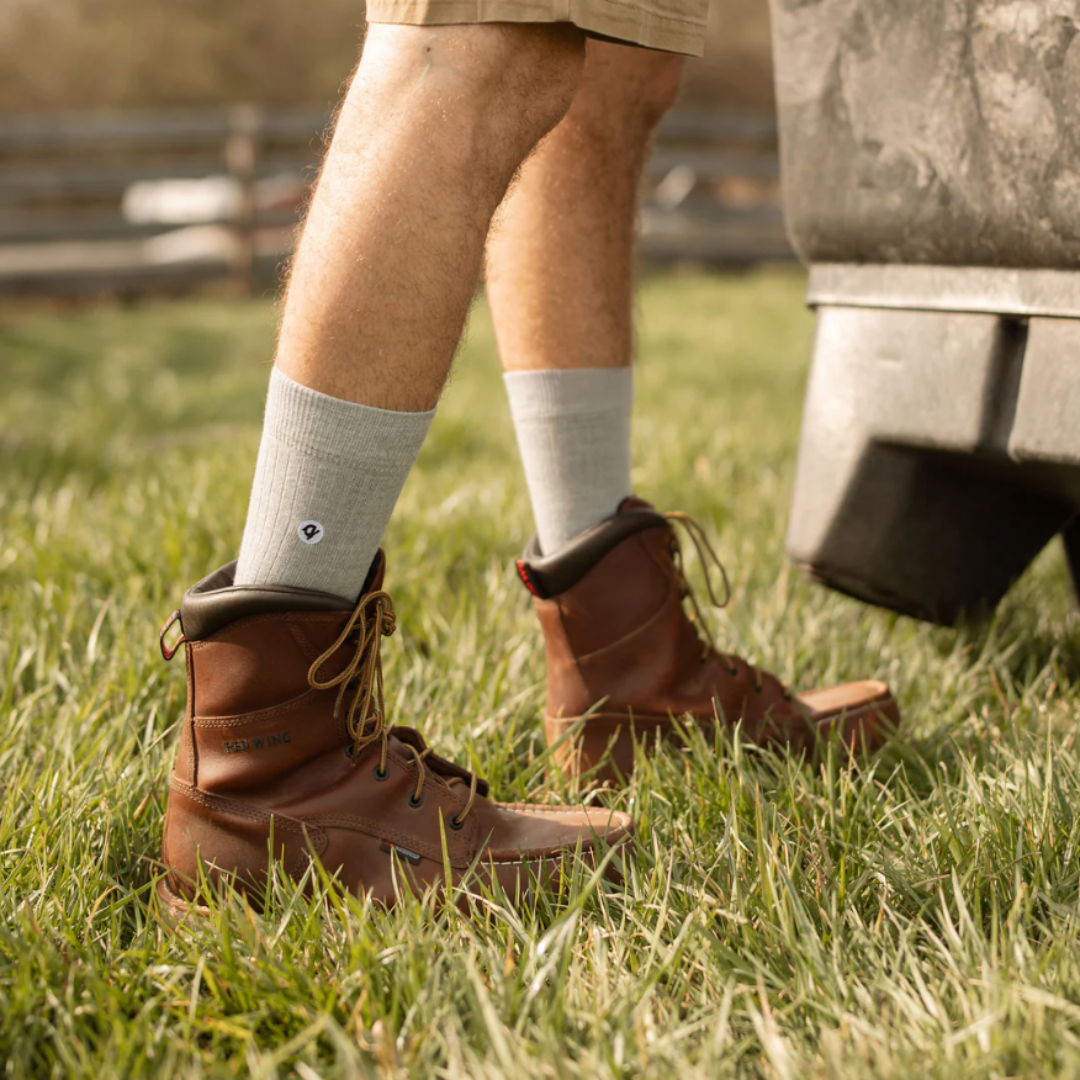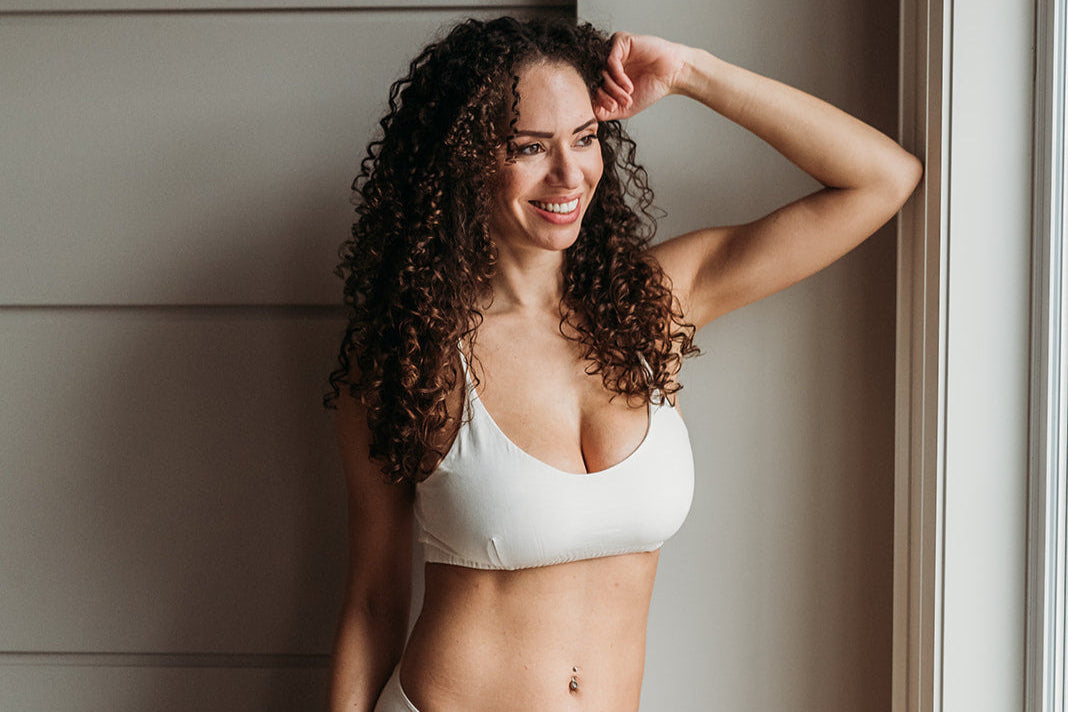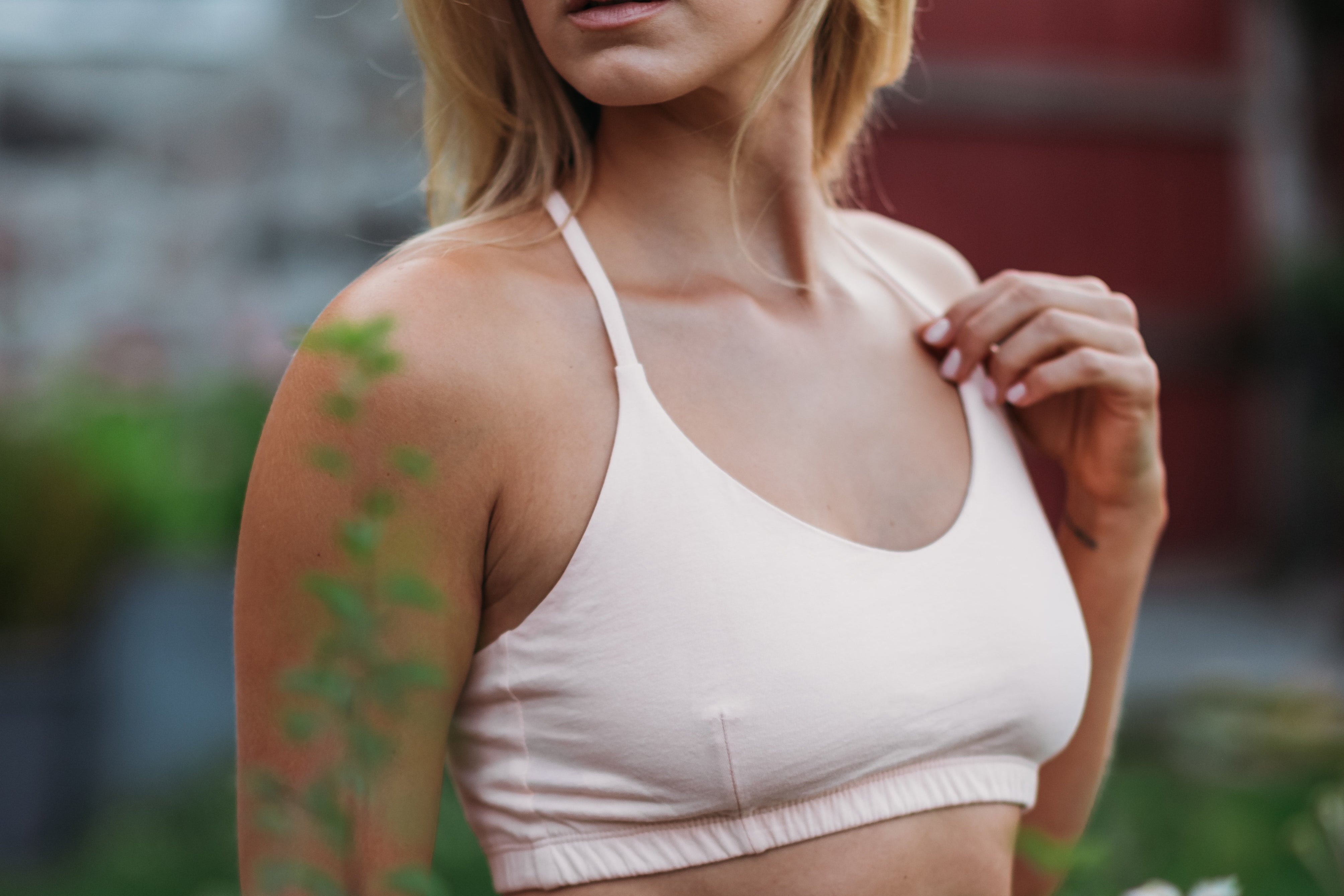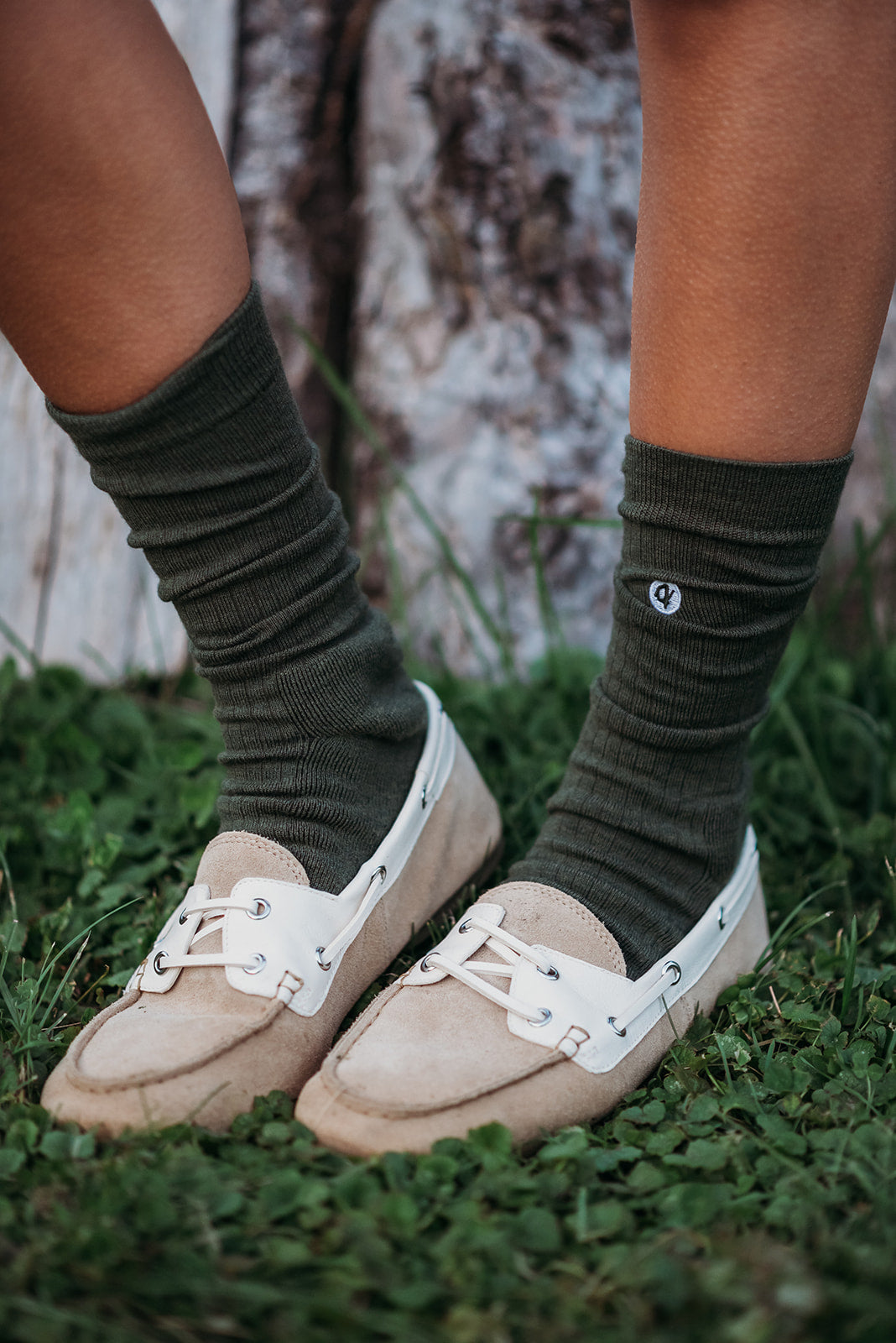
Memory Foam Bras: Comfortable or Chemically Concerning?
If you've shopped for a bra recently, you've probably come across memory foam. It’s marketed as the ultimate solution for a seamless fit, and has become a common feature in everything from everyday t-shirt bras to high-support sports styles.
But behind the plush feel lies a more complex story. A growing body of research and consumer advocacy is turning a critical eye toward the synthetic materials in our clothing, especially items we wear against the skin for 12+ hours a day. In this article, we’ll dive into what gives memory foam its unique properties, and at what potential cost to our health and the environment?
We’ll cut through the marketing jargon to provide a clear, evidence-based look at what memory foam bras are, the verified benefits they offer, and the concerns about their chemical composition. We'll also explore how pure, non-toxic fabrics like organic cotton offer a compelling, natural alternative to the memory foam bra.
Finally, we’ll answer the most important question: what truly makes a bra comfortable? Is it the high-tech molding of memory foam, or the proven safety and breathability of natural fabrics?
What is Memory Foam in Bras?
Before it appeared in bras, memory foam was literally rocket science - it was developed by NASA in the 1960s to improve seat cushioning and crash protection for astronauts. This "temper foam" was designed to absorb impact and conform evenly to the body. It’s made of a special type of polyurethane foam that’s both viscous and elastic (hence its technical name, "viscoelastic" foam).
So, how did it get from spaceships to bras? The key is its unique reaction to heat and pressure. Unlike regular bra padding that just adds volume, memory foam is meant to be smart. It softens from your body heat, gently molding to the contours of your chest. When the pressure is gone, it slowly returns to its original shape.
In bras, you’ll typically find thin, flexible sheets of this foam laminated directly into the cup. You’ll spot it in all kinds of styles;
- T-shirt Bras: For that smooth, no-show look under tight tops.
- Sports Bras: To help absorb impact and reduce bounce.
- Push-up & Plunge Bras: Where it’s used to create shape and enhance cleavage without rigid padding.
Why People Love Memory Foam in Bras
It’s not just a marketing gimmick; there are some genuine reasons this foam has become a lingerie staple.
- Custom Fit: This is the big one. Because it molds to your unique shape, memory foam can fill in gaps on the top or sides of the cup, creating a smoother silhouette. It’s like the bra is adjusting itself to you, not the other way around.
- Durability: A common problem with traditional padded bras is that the padding can get lumpy or bent out of shape after washing. Memory foam is more resilient. It bounces back to its original form wash after wash, which means the bra keeps its look longer.
- Support for Everybody: Its properties make it a favorite in sports bras. But it’s also a win for anyone who finds rigid underwire or structured cups uncomfortable. The foam provides a different, softer kind of support.
Health and Environmental Concerns with Memory Foam Bras

Now, let’s talk about the “chemically concerning” part. That super-comfortable foam is a plastic-based product, and that comes with some real drawbacks.
A Look at the Chemical Makeup
Memory foam is predominantly made from polyurethane, a petroleum-based plastic. To achieve its signature feel, other chemical additives are used during manufacturing. These include substances like:
- Formaldehyde: A known irritant and carcinogen, sometimes used in adhesives.
- Methylene chloride: A suspected carcinogen formerly used as a blowing agent.
- Chemical flame retardants, Like PBDEs, which have been linked to serious health issues.
While regulations and manufacturing have improved, leading many brands to use safer alternatives, the potential for these chemicals to be present (especially in more affordable bras featuring lower-quality foams) remains a concern.
The Issue of Off-Gassing and Skin
You are sure to be familiar with that “new product” smell when you unwrap a memory foam mattress. That’s off-gassing: the release of Volatile Organic Compounds (VOCs) into the air. While the smell from a bra is far less intense, the foam still releases VOCs, which may cause skin irritation, itching, or redness for those with sensitivities. There have been cases of bra rash and skin irritation from memory foam bras.
An Environmental Headache
From an eco-perspective, memory foam is tough to defend. It’s derived from non-renewable petroleum, its production is energy-intensive, and at the end of its life, it’s not biodegradable. A memory foam bra can sit in a landfill for hundreds of years, slowly breaking down and potentially leaching chemicals back into the environment.
Can Memory Foam and Organic Cotton Be Combined?

In other words, can you have it all? The unique properties of memory foam and the safety and comfort of natural cotton?
The honest answer is: it's complicated.
While a brand could theoretically use organic cotton for the main fabric and pair it with foam, the foam itself could never be certified as "organic". It is, by its very nature, a synthetic material. 100% natural memory foam simply doesn't exist.
Luckily, progress is being made. Some manufacturers now offer foams that are CertiPUR-US® or OEKO-TEX® Standard 100 certified. These certifications mean the foam has been tested and contains low levels of VOCs and is free from certain harmful chemicals like heavy metals, formaldehyde, and specific flame retardants.
So, if you’re drawn to the feel of memory foam, your best bet is to look for brands that are transparent about their materials and can provide these third-party certifications. It’s not a perfect solution, but it’s a step toward a safer, more conscious product.
Alternatives to Memory Foam Bras
If the health and environmental questions around memory foam give you pause, you're not alone. The good news is that effective, time-tested alternatives made from clean, simple materials offer a different path to comfort.
Organic Cotton Bras and Bralettes
Research consistently shows that organic cotton's breathability significantly reduces skin irritation and heat rash compared to synthetic fabrics, as its natural fiber structure allows for superior air circulation. This is a game-changer for managing moisture and keeping your skin cool, dry, and healthy. Plus, because GOTS-certified organic cotton is grown without synthetic pesticides and processed without toxic chemicals, it ensures the fabric against your skin is free from irritating residues.
Q for Quinn’s collection of 100% organic cotton bras and bralettes is designed to offer this gentle, natural support without any synthetic padding or foams, making them a safe option for sensitive skin.
Cotton Sports Bras
You don’t need thick foam for a good workout. Modern organic cotton sports bras use smart designs to provide secure, lightweight support. The breathable nature of organic cotton is crucial here; it helps wick moisture away from the body during exercise, reducing the sticky, suffocated feeling you can get with synthetic performance fabrics. This makes them a fantastic, non-toxic choice for everything from a yoga class to a busy day of errands.
Q for Quinn organic cotton sports bras are designed for low to medium-impact activities, providing comfort that is both physical and mental, knowing your skin can breathe easily.
Plant Dyed Bras
If you’re looking to eliminate chemicals from every part of your wardrobe, natural dye bras are the ultimate option. Studies indicate that the dyes in clothing are a primary source of skin sensitivity, with conventional synthetic dyes often containing heavy metals and allergens.
Plant-dyed bras use pigments from roots, fruits, and leaves, like turmeric or indigo, to create beautiful, earthy tones without synthetic chemicals. Or, you can choose the purest option of all: dye-free bras in the natural, creamy color of organic cotton, which completely eliminates dye as a potential irritant.
That’s why we developed a line of plant-dyed and dye-free bras, which utilize natural pigments to provide color without the use of synthetic chemicals and undyed cotton, offering peace of mind in every stitch.
So, What’s the Right Choice?
It ultimately comes down to your personal definition of comfort. Is it the pleasant sensation of foam molding to your body, or the lasting peace of mind that comes from wearing natural fabrics against your skin?
While memory foam offers a customized fit, it cannot escape its chemical origins. The plush feeling comes with off-gassing, skin irritation, and a significant environmental cost that lasts long after the bra is discarded.
Organic cotton provides a different kind of smart design - one perfected by nature. Its breathable fibers manage moisture to prevent irritation, its non-toxic certification guarantees safety, and its biodegradable nature respects the planet.
This isn't a compromise: it's an upgrade. It’s the confidence of wearing something that supports your well-being as much as it supports your body, making it the definitively healthier, more comfortable choice for the long run.















